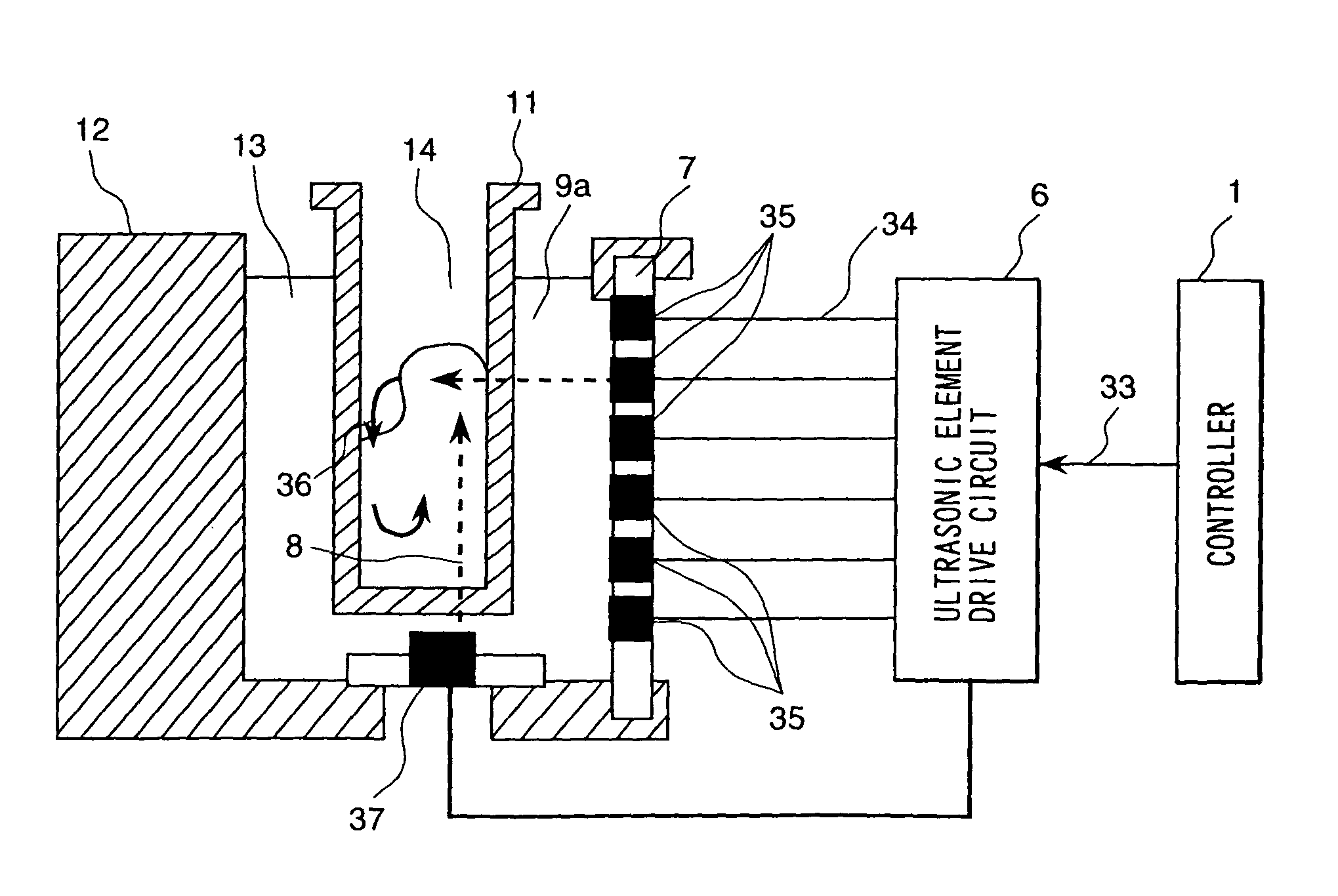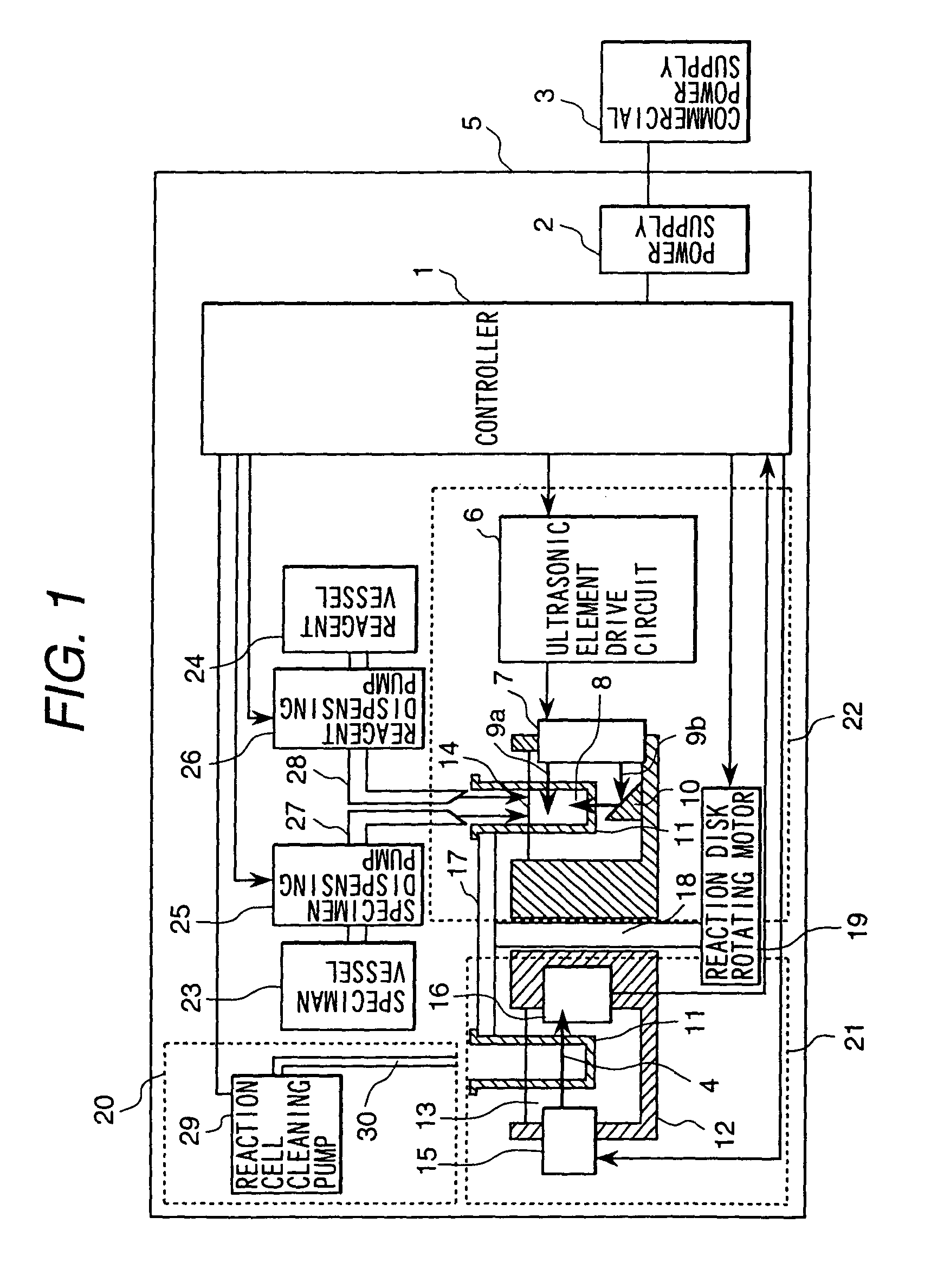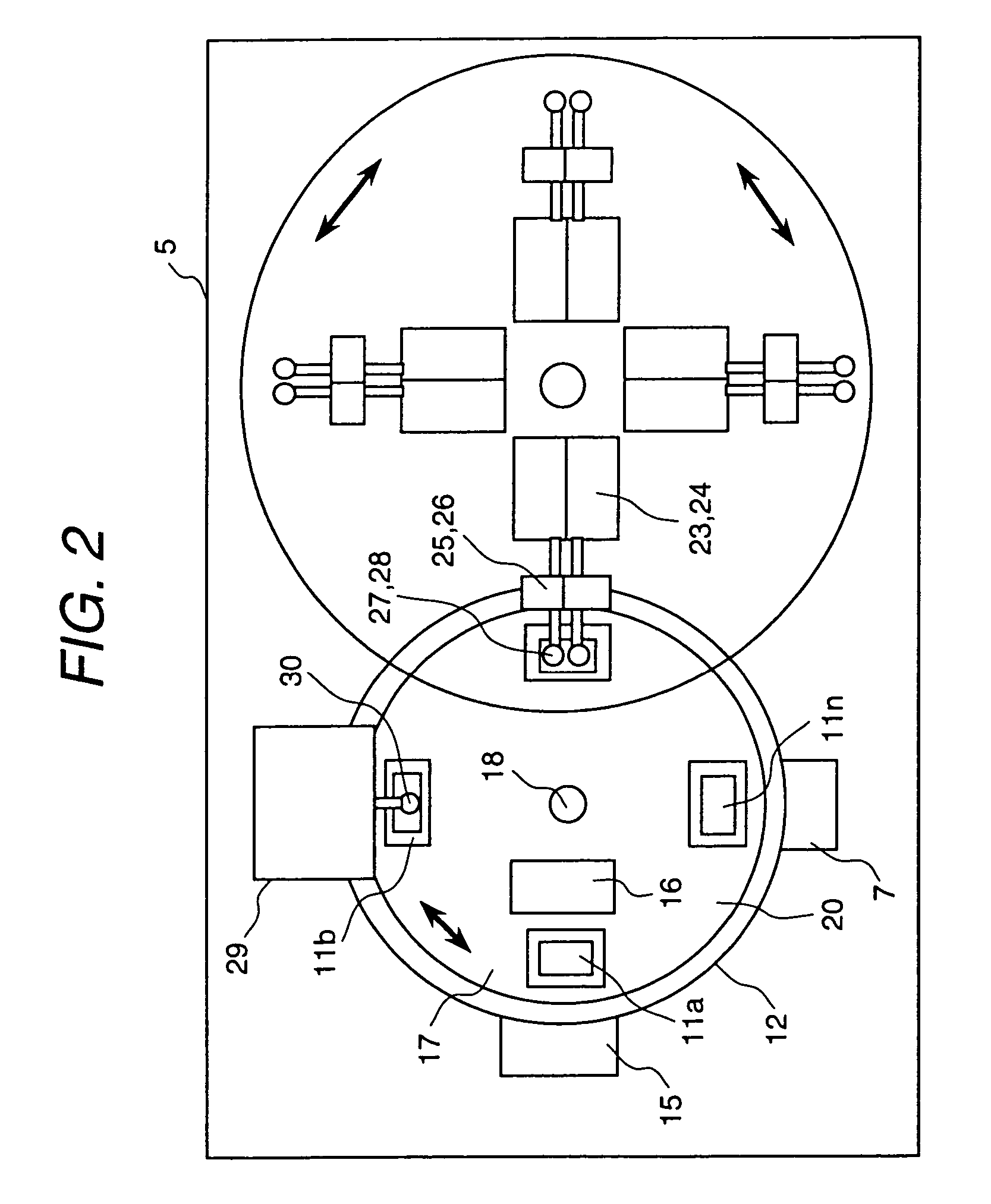Automatic analyzer
a technology of automatic analysis and analyzer, applied in the direction of mechanical vibration separation, process and machine control, instruments, etc., can solve the problems of affecting the result of the next analysis, reducing measuring accuracy, and not being effective as agitating means, and achieve high-reliability analysis results
- Summary
- Abstract
- Description
- Claims
- Application Information
AI Technical Summary
Benefits of technology
Problems solved by technology
Method used
Image
Examples
first embodiment
[0061]Using FIGS. 1 to 4, the following describes the first embodiment of the automatic analyzer according to the present invention:
[0062]FIG. 1 is a schematic cross sectional view representing a part of the automatic analyzer according to the present invention. FIG. 2 is a partial plan representing the analyzer of FIG. 1. FIG. 3 is a schematic cross sectional view representing of the major portion related to the first embodiment according to the present invention.
[0063]Controller 1 in FIGS. 1 and 2 comprises an information processing system or sequencer provided with a CPU, memory and I / O. Using the automatic analysis and diagnosis program and data stored in the memory, said controller processes or administers and controls the operation of the automatic analyzer 5 and information required for analysis operation through the CPU.
[0064]Detector 21 comprises a reaction vessel 11 to mix between reagent and specimen, a light emitting unit 15 to generate light 4 to be applied to said reac...
second embodiment
[0085]FIG. 5 is a schematic cross sectional view representing the major portion of the second Embodiment of the automatic analyzer according to the present invention. The portions other than the configuration shown in FIG. 5 are the same as those shown in the first Embodiment, so they will not be illustrated or described.
[0086]In this second Embodiment given in FIG. 5, the bottom of the position corresponding to the agitator 22 is designed in an inclined structure, wherein said bottom is placed face to face with the bottom 8 of the reaction vessel 11 of the heat insulating bath 12. The ultrasonic reflecting mechanism 10 is designed to ensure that the lateral ultrasonic wave 9b generated by the piezoelectric element 35 is reflected to proceed along the side wall side wall close to piezoelectric element 35) of this reaction vessel 11 from the bottom of the reaction vessel 8. This allows the lateral ultrasonic wave 9b to proceed in the upward direction so that it can be used as the low...
third embodiment
[0091]FIG. 6 is a schematic cross sectional view representing the major part of the automatic analyzer according to the third Embodiment of the present invention. The portions other than the configuration shown in FIG. 6 are the same as those shown in the first Embodiment, so they will not be illustrated or described.
[0092]The bottom inside the reaction vessel 11 of the automatic analyzer in FIG. 6 is designed in an inclined structure to create the mechanism which ensures that lateral ultrasonic wave 9b generated by the piezoelectric element 35 is reflected to proceed to the liquid level from the bottom of the reaction vessel 11. This allows the lateral ultrasonic wave 9b to proceed upward; thus, it can be used as lower ultrasonic wave 8.
[0093]The sequence to actuate ultrasonic wave generation actuates the piezoelectric element for lateral irradiation 35 located at the bottom to generate lateral ultrasonic wave 9b. Lateral ultrasonic wave 9b enters the reaction vessel 11 from the si...
PUM
| Property | Measurement | Unit |
|---|---|---|
| physical properties | aaaaa | aaaaa |
| physical property | aaaaa | aaaaa |
| mechanical oscillation | aaaaa | aaaaa |
Abstract
Description
Claims
Application Information
 Login to View More
Login to View More - R&D
- Intellectual Property
- Life Sciences
- Materials
- Tech Scout
- Unparalleled Data Quality
- Higher Quality Content
- 60% Fewer Hallucinations
Browse by: Latest US Patents, China's latest patents, Technical Efficacy Thesaurus, Application Domain, Technology Topic, Popular Technical Reports.
© 2025 PatSnap. All rights reserved.Legal|Privacy policy|Modern Slavery Act Transparency Statement|Sitemap|About US| Contact US: help@patsnap.com



